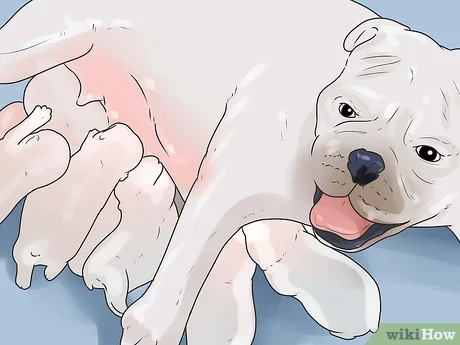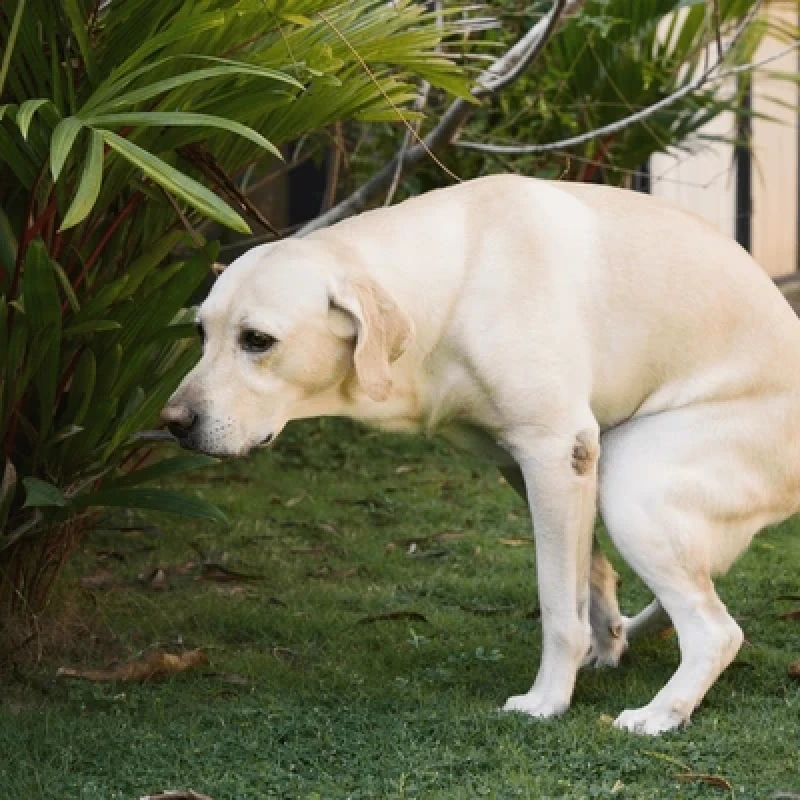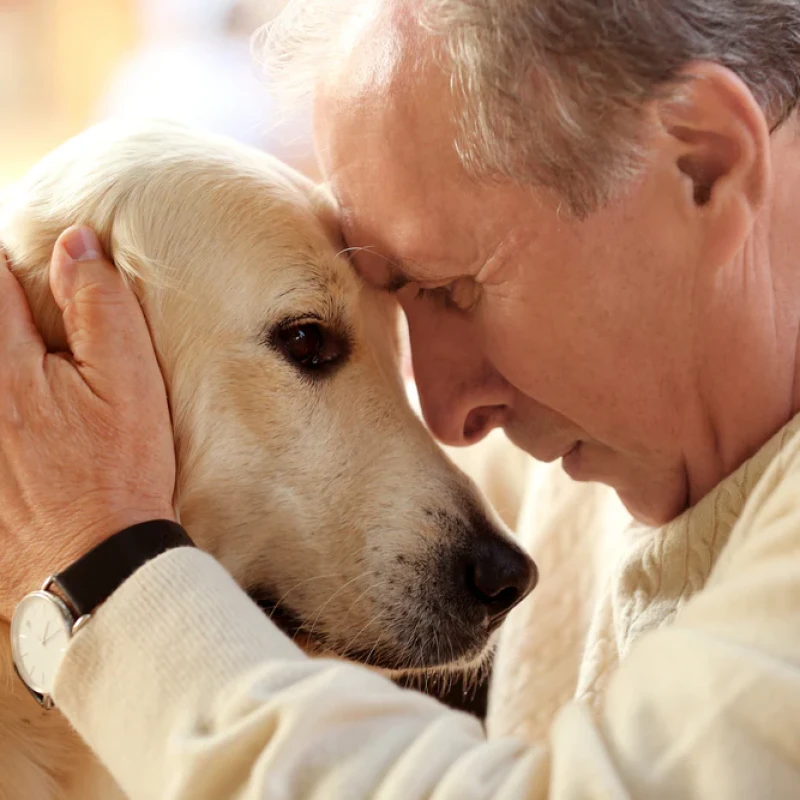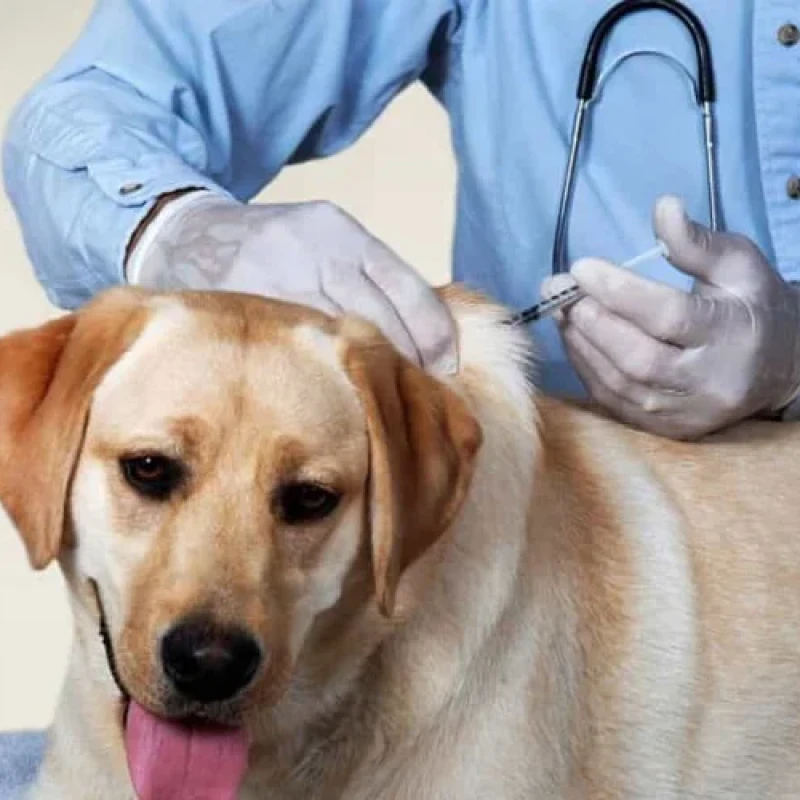The process of assisting a dog in giving birth involves several different steps. If you have never cared for a pregnant dog, a dog about to give birth, or a dog that has just given birth, you should not miss this article. The experiences shared below will help you minimize the risks that may occur with your furry friend during this sensitive time. Pet Mart will guide you on how to apply these steps in emergencies if the veterinarian cannot arrive in time or if the dog's water has broken.

Why is it necessary to assist a dog in labor when her water breaks?
Pregnant dogs approaching the time of giving birth require special attention from their owners. Sometimes, owners need to assist the dog to ensure that “the mother is safe and the puppies are healthy.” Most dogs instinctively give birth on their own. However, owners should be attentive to prevent unfortunate incidents.
Some dog breeds find it particularly difficult to give birth, such as Bulldogs, Boxers, Chihuahuas, Pugs, Corgis, Dachshunds, and Poodles. Additionally, dogs that are over-cared for or are underdeveloped and weak may also face challenges during labor. In any birthing situation, some puppies are born easily while others may have difficulty due to the position of the fetus or the mother’s health condition.
If the mother dog becomes exhausted and is not assisted during labor, complications can easily arise. Puppies that remain in the mother’s womb for too long may suffocate if no intervention occurs. Stillbirth can lead to infections in the dog, endangering both the mother and her puppies.
Therefore, assisting a dog during labor is very necessary. However, relying solely on the owner’s reproductive experience is not enough; expert guidance is also required. It’s best to seek support from professional breeders or veterinarians.
Anticipating the Dog's Due Date
It’s essential to anticipate the time of birth to prepare for assisting the dog. You should base this on the timing of the dog’s first mating. Accurately track the number of times and the timing of the mating. Observe the size of the belly and perform ultrasounds to know the number of puppies. If ultrasounds are not possible, pay attention to the belly size; a smaller belly indicates fewer puppies, resulting in a longer gestation period. Most dogs will give birth after about 64 days, referred to as being “overdue.” In some cases, dogs may even be pregnant for 68 to 70 days.
Conversely, the more puppies there are, the earlier the dog will give birth. Some may deliver after 57 to 58 days. If the gestation period exceeds 55 days, the puppies will be viable. However, if the period is shorter, survival may not be possible or may be extremely difficult. Therefore, whether puppies open their eyes quickly or slowly depends on the number of puppies; fewer puppies often mean they are born “older.”
There is a significant chance that mother dogs will give birth at midnight, making it inconvenient to take them to a veterinary clinic. You can gently massage the mother’s belly from top to bottom while she eats a small amount of energy-boosting food to help facilitate the birthing process.
Preparing for the Dog Mother’s Labor
During the birthing process, mother dogs may become fatigued. To provide timely energy replenishment, prepare easily digestible and nutritious food for the dog. Feed her before she gives birth.
Before labor, clean the nipples of the mother dog. Shave the hair around the nipples and clean her genital area. The birthing process may involve uterine contractions accompanied by pain. The mother dog will breathe heavily and rapidly, and her anus and genital area will swell.
At this time, you will only see the mother dog contracting her belly, and the puppies will emerge from their membranes. During the birthing process, it’s best for the owner to stay nearby to support her when needed, allowing the mother dog to take care of her puppies independently.
Preparing Tools to Assist the Dog During Labor
First, prepare a large nest or mattress for the mother dog, preferably made of wood or paper. The birthing area should be placed in a quiet, warm corner that is sheltered from the wind. Place a bit of cloth in the nest, but not too much to avoid trapping the puppies. You can create a wooden box for the dog to give birth in, with the size depending on the mother dog's size. The maximum height should be 20 cm, with clean fabric lining the bottom. The temperature in the dog’s birthing area should be between 26-27°C, and the humidity should be less than 80%. It’s advisable to have a thermometer and hygrometer to monitor the temperature and humidity in the birthing area. If you use a heater without a thermometer, it can cause the puppies to die from overheating.
Before assisting the dog during labor, prepare a few clean towels, scissors, thread, cotton cloth, disinfectant, a washing basin, and old newspapers. It’s best to have heating devices (such as lamps, electric blankets, thick towels, etc.) ready for the winter season.
If you are not very knowledgeable about the reproductive process of female dogs, it is best to contact a veterinarian or ask those with experience. If you own a breed known for having difficulty during birth, it is best to have a veterinarian assist with the delivery. If you are the owner assisting in the birth, you should understand the entire birthing process to avoid accidents.
Steps to Prepare for Assisting the Dog in Labor
24 hours before birth: The mother will have a characteristic white milk. She will eat less or refuse food, her belly will drop, and her abdominal muscles will relax (sagging). There will be frequent urination and defecation (leaky bowel movements). If the dog has eaten a lot beforehand, she may vomit due to pressure from the uterus on the stomach.
12-2 hours before assisting the dog in labor: Check the body temperature (rectal), which will drop to between 36.7-37.5°C. The dog may tremble, especially in cold or wet weather. She will be restless, walking, lying down, or standing uneasily, showing a tendency to dig or search for a nesting area, and may hide in a dark, quiet corner. Her eyes will be wide, looking at the owner with a pleading expression, not wanting to be far from them. The vulva will be swollen, and clear fluid may be leaking out.
Recognizing Signs of Imminent Labor
After mating, the dog will give birth approximately 59 to 63 days later. Symptoms that the dog is about to give birth include frequent urination, occasional vomiting, loss of appetite, or decreased food intake. The mother will breathe rapidly and show a tense, dazed expression, with tears running from her eyes and breathing through her mouth. A temperature check will reveal a drop below 37 degrees.
Owners need to observe closely to take necessary intervention measures. If the water breaks or if the mother pushes for over 15 minutes without giving birth, it’s crucial to call a veterinarian for advice and solutions. Pay special attention to mother dogs with a history of difficult births or those that have undergone cesarean sections.
Mother dogs will have milk a few days before giving birth, but some only produce milk at the time of delivery. You may be able to see and feel the fetuses moving in the mother’s abdomen. The mother may eat less and urinate more frequently. In some cases, she may not be able to control her urination due to pressure on the bladder.
2-4 hours before giving birth: The mother dog will stop eating, may experience “leaky” bowel movements, urinate frequently, whine, and breathe quickly and anxiously. She may dig and show reflexive behavior to create a “nest.” At this time, you need to prepare a well-ventilated, cool, warm, and quiet birthing area with sufficient light for your furry friend. Limit interactions with people and other animals.
Note: Do not force the mother dog to eat or drink a lot before giving birth. If there are signs of difficulty in labor, such as large puppies or severe pain, but no birth occurs after 4-6 hours, call the veterinarian immediately. Always have clean drinking water mixed with a little salt on hand.
It’s best to allow the dog to give birth naturally. Only observe to detect any complications during labor. If the mother dog shows behavioral changes or aggression, avoid intervening too much to prevent psychological stress. This can lead to shock, uterine artery rupture during contractions, blood loss, and death.
Caring for the Mother Dog During Labor
You need to understand the concept of “breech presentation.” In dogs, the term “breech” does not refer to whether the head or tail comes out first, but rather the “position” of the fetus. The following are types of breech presentations:
- Head is out but two front legs are not, or only one front leg is protruding.
- One or two front legs are out but the head is not.
- The tail is out first but one or two hind legs are not.
To pull the fetus out, you must change its position to the “normal” presentation. Specifically, the head and two front legs, or the tail and two hind legs should come out together. Eating the placenta is a reflex of the mother dog to help with the birthing process and to bite the umbilical cord of her puppies. If you have to assist the dog in labor, it’s best to let her eat one or two placentas. Do not let her consume all of them as it can cause bloating and indigestion after birth.
Caring for Puppies After They Are Born
Once the puppies are born, the most crucial step is to confirm that they are breathing. If a puppy is not breathing, you must quickly wrap it in a towel, hold it upside down, and then vigorously wipe it with a towel to stimulate breathing and save the puppy. Once the puppy responds, bring it to the mother to lick its body.
If the puppy is still in the amniotic sac, you need to tear the sac open and clean it. Suck out the mucus from the nose and mouth to help the puppy breathe as quickly as possible.
Intervention for Assisting Dog Delivery: If half of the puppy's body is protruding and it hasn't come out further after a few minutes, gently pull the puppy out. Apply force from top to bottom, from front to back, as quickly as possible. Tear the sac urgently and wipe the puppy's mouth dry until it makes a sound.
If amniotic fluid flows out of the vulva and is green but no puppies are delivered, this is abnormal and requires examination and assistance from a veterinarian. If the amniotic sac appears protruding like a small balloon, the dog may be pushing continuously, and the amniotic fluid may break. The vulva may swell and become tense. Individual body parts of the puppy may be visible before the entire puppy emerges from the thin sac.
Nasal Suction Technique: Place your index finger in the mouth to help it open. Use a nasal suction bulb or mouth-to-mouth method to clear the nose so that the mouth and nose are connected.
During the delivery assistance, avoid using scissors to cut, and do not use string to tie off the umbilical cord. If the mother dog is unable to bite through the cord herself, you should do it. Prepare scissors and clamps along with disinfectant alcohol right before the mother dog gives birth. Use medical thread to tie off the umbilical cord about 1 cm from the body, and cut 2 cm away from where you tied it. Disinfect the cut area. If the mother dog bites the cord off too long, treat it in the same manner. The ideal length for the umbilical cord is about 1-2 cm, depending on the breed size. Ensure good sterilization to prevent tetanus infections. Afterwards, disinfect with 70°C alcohol or Povidone iodine 5%.
After cutting the umbilical cord, if the puppy shows respiratory response, wipe its body with a warm cloth. Once the puppy is clean, allow it to nurse from the mother. Each puppy is usually born about 20-40 minutes apart. If after one hour no puppies have been born, you should quickly seek veterinary advice.
Handling Complications During Dog Delivery:
If the mother dog is in severe pain and has not given birth within one hour, this may indicate difficulty in labor. You must quickly contact a veterinarian for assistance. When the mother dog is in pain and breathing heavily, you can gently apply pressure to her abdomen in rhythm. Massage the mammary glands to help with the birthing process, and at the same time, gently comfort and encourage the mother dog.
The birthing position depends on the mother dog. Many lie on their sides during labor, while others may adopt a squatting position. After the puppy is born in the sac, the mother will lick the placenta to help it break apart quickly. The mother dog will bite the umbilical cord, lick the face, nose, and body of the puppy to stimulate breathing.
If the mother dog is inactive, or to conserve energy for her, the owner must assist from the side. Coordinate with the mother's breathing to pull the puppy out in a timely manner.
Using Oxytocin to Assist Dog Delivery:
When the dog is pregnant, it’s advisable to have oxytocin ready at home. You can purchase it from veterinary clinics or pet medicine suppliers, and they will guide you on how to administer the injection. Regularly consult with your veterinarian for advice on assisting with the dog’s delivery.
After the dog has given birth to one puppy, wait about 30 minutes before injecting. The injections should be spaced 30 to 40 minutes apart. Do not inject if no puppies have been born yet.
If a puppy is stuck in the uterus, intervene by lining a towel on your hand and gently pulling the puppy out. Time your pull with the mother dog's contractions to quickly free the puppy. Avoid the situation where the puppy gets stuck in the uterus, as this can block blood flow in the umbilical cord, leading to oxygen deprivation and death.
⚠️ Answers to Frequently Asked Questions
Q: How long does a dog take to give birth?
A: The time it takes for a dog to give birth can last from 30 minutes to 3 hours, depending on the number and size of the puppies, as well as the birthing experience of the mother. Each puppy is usually born a few minutes to an hour apart.
Stage 1 (Preparation): This is the stage before the dog starts to push. During this stage, the dog may show signs like loss of appetite, searching for a quiet place to give birth, and may experience uterine contractions. This stage can last from a few hours to 24 hours.
Stage 2 (Pushing): In this stage, the dog will begin to have stronger uterine contractions and will start to push to give birth to the puppies. Each puppy is usually born about 20 to 60 minutes apart, but it can take a bit longer if the mother is exhausted or if there are issues. If the dog is pushing strongly without producing a puppy for 1-2 hours, this may indicate a problem, and you should contact a veterinarian immediately.
Stage 3 (Delivering the Placenta): After each puppy is born, the mother dog will typically deliver the placenta. Sometimes, a few puppies may be born consecutively before the placenta is expelled.
Q: How much does it cost to assist a dog in giving birth?
A: The cost of assisting a dog in giving birth can vary depending on many factors, such as the breed of the dog, the number of puppies, the health of the mother, the method of delivery (natural or surgical), and the location of the delivery (at home or at a veterinary clinic). Costs can range from 250,000 to 500,000 VND for each puppy delivered, or from 1,300,000 to 3,000,000 VND for a cesarean section. Additionally, you should prepare for other costs such as pregnancy check-ups, ultrasounds, blood tests, fluid therapy, vaccinations, pain relief, ear and dental hygiene, and grooming.
The costs associated with assisting a dog in giving birth can fluctuate based on various factors, including but not limited to:
- Location: Costs may be higher in areas with a high cost of living or where there is high demand for veterinary services.
- Complexity of the process: If the dog requires surgery (such as a cesarean section), the costs will be higher than for a natural delivery.
- Breed: Some breeds with larger heads or smaller bodies may require more intervention, leading to higher costs.
- Health status: If the dog has health issues or other complications during childbirth, this may increase the costs.
Q: Is assisting with the delivery of Poodles, Chihuahua, Dachshunds, and Pugs different?
A: Pugs and some other breeds have a large head compared to their body, which can make natural delivery difficult. Often, Pugs need surgery (a cesarean section) to ensure the safety of both the mother and the puppies. Dachshunds may also encounter some issues during childbirth due to their long bodies and short legs, especially if the puppies are large.
The methods for assisting the delivery of these breeds have some similarities and some differences, as follows:
- Poodles and Chihuahuas typically give birth to 4 to 6 puppies per litter, while Dachshunds and Pugs usually give birth to 2 to 4 puppies per litter.
- Poodles and Chihuahuas can often give birth naturally if there are no complications, while Dachshunds and Pugs usually require a cesarean section due to their body shape not being conducive to natural birth.
- Poodles and Chihuahuas can give birth starting at 12 months, while Dachshunds and Pugs should ideally give birth starting at 18 months to avoid health risks.








